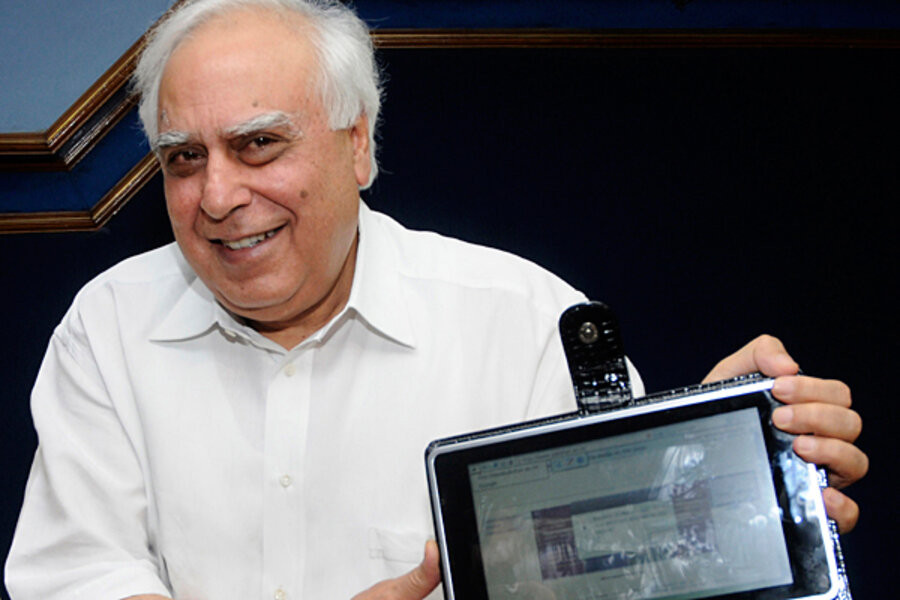$35 computer taps India's huge low-income market
Loading...
| Mumbai, India
The sleek handheld device includes an Internet browser, a multimedia player, a PDF reader, and video conferencing ability.
But its biggest attraction is the price: $35.
Kapil Sibal, India’s human resources development minister, today unveiled the prototype of an unnamed Linux-based computing tool for students to be introduced in higher educational institutions by 2011.
“The aim is to reach such devices to the students of colleges and universities, and to provide these institutions a host of choices of low-cost access devices around $35 or less in near future,” the human resources ministry said at the launch of the computer.
The latest gadget is a thrilling prospect for the future of global education, says Anand Nandkumar, a professor of business strategy in the field of innovation and entrepreneurship at the Hyderabad-based Indian School of Business.
But it's less symptomatic of India’s ambition to unleash cutting-edge innovation, he says, as much as its desire to tap into a new market. The touch screen device is the latest example of how technology and ultra-cheap innovations are bringing new options to India’s 1.2 billion people, whose per capita income is $1,030.
“It’s not like launching a rocket into space,” says Professor Nandkumar. “This kind of innovation is symbolic of the recognition of a vast, untapped market opportunity.”
According to a study last year by India’s Associated Chambers of Commerce and Industry, by 2020 rural markets in India will grow to $500 to $600 billion from the current $487 million. Despite their minimal earnings, the nearly 742 million people across rural India are pushing retail demand faster than urban areas and accounting for more than 60 percent of the national demand, the study found.
And many new gadgets are catering to it.
In 2008, Tata launched the world’s cheapest car – the bubble-shaped Nano – priced at $2,500. Its low-cost engineering fulfilled the aspiration of millions of moped-riding Indians for whom a four-wheel drive was far out of reach. The same company last year launched the Swach water purifier – its two models priced at 749 rupees ($16) and 999 rupees ($21) – with the promise of providing clean drinking water to millions of India’s poor.
The price of the new computer is expected to fall to $10 in the coming years.
Related:





